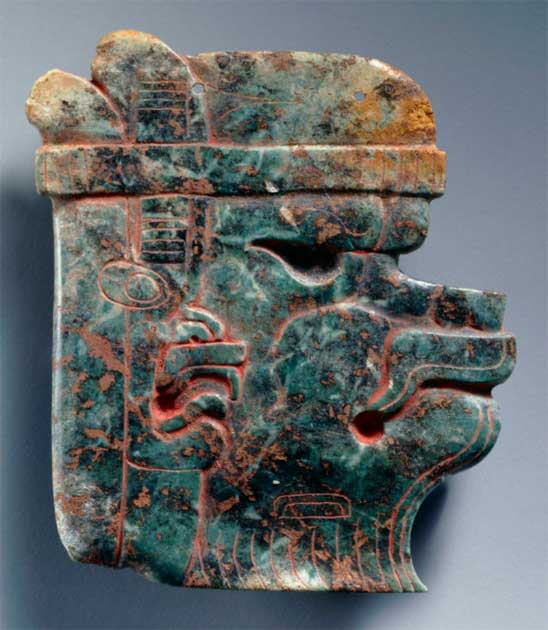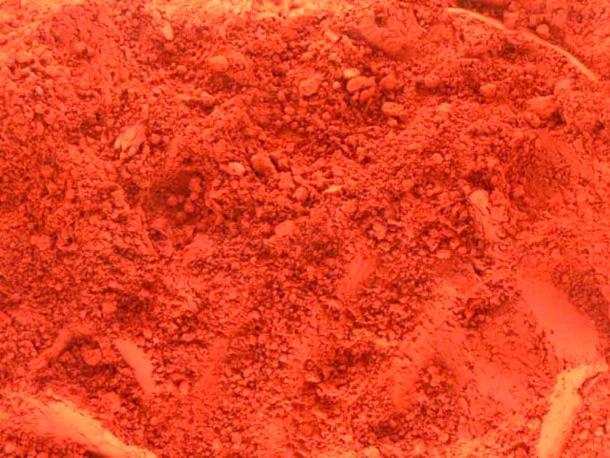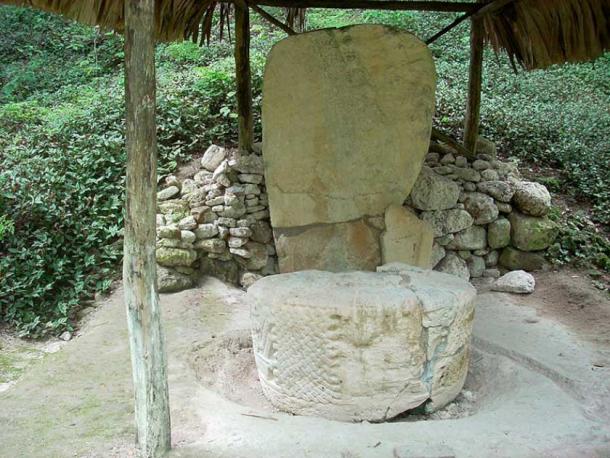
Meta-Study Shows Ancient Maya were at High Risk of Mercury Poisoning
The Maya Empire dominated large swaths of Mesoamerica for more than 3,000 years. But despite their impressive record of survival, the Maya civilization did not live completely in harmony with their environment, as a review article published by Frontiers in Environmental Science clearly reveals. Surprisingly, for the Maya mercury poisoning was a serious problem.
It seems the Maya people faced a significant ecological and public health concern, one that would trigger a series of cleanup actions if uncovered by the United States Environmental Protection Agency or the Environment Agency in the United Kingdom. That problem was mercury contamination, which has been found to be at shockingly high levels in measurements taken of soil samples from multiple Maya sites in southern Mexico and northern Central America.
“Mercury pollution in the environment is usually found in contemporary urban areas and industrial landscapes,” study lead author Dr. Duncan Cook, an associate professor of Geography at the Australian Catholic University, told Frontier Science News.
“Discovering mercury buried deep in soils and sediments in ancient Maya cities is difficult to explain, until we begin to consider the archaeology of the region which tells us that the Maya were using mercury for centuries.”

Middle Formative (c. 1,000–500 BC) Olmec jade pendant with cinnabar in incised lines. The Maya used prodigious quantities of cinnabar-based products, one of the sources of Maya mercury poisoning. (Princeton University Art Museums)
Reviewing Past Research Uncovers Maya Mercury Poisoning
The discovery of the Maya mercury problem didn’t emerge from any new studies, but through a thorough review of past research. Dr. Cook joined with geography professors from the United States and the United Kingdom to look at the results of chemical testing of soil and sediments collected at 11 Maya archaeological sites in Mexico, Belize, Honduras, Guatemala, and El Salvador, with all of the testing having been performed on Classical Period (250 to 900 AD) soil samples.
The scientists were alarmed to discover that measurable quantities of mercury, a notorious heavy metal toxin, had been found at ten of those sites. Concentrations were variable, ranging from a low of .016 parts per million (ppm) at Actuncan in western Belize to an astonishing 17.16 ppm at the ancient city of Tikal in northern Guatemala.
The currently accepted toxic threshold (the point at which exposure to a substance poses a health risk) for mercury in sediments has been set at one part per million. This means the soil at Tikal was 17 times more contaminated than that baseline figure. This result from Tikal reinforced the findings of a team of researchers led by scientists from the University of Cincinnati, who in 2020 published a study in Scientific Reports showing that two ancient Maya reservoirs in Tikal were so contaminated with mercury and algae that the water would have been undrinkable.

The ancient Maya made extensive use of a soft metallic substance known as cinnabar, seen in powdered form here, a form of mercury sulfide that can be processed to produce red-brick-colored paints and powders. (ReSeandra / Adobe Stock)
The Maya’s Surprising Affection for Mercury
The obvious question is, what caused these high levels of mercury to accumulate in areas occupied by Maya people who lived in the Classical Period, a time when the Maya Empire had reached its pinnacle of social, cultural, and economic development? According to the scientists involved in the new study, the ancient Maya made extensive use of a soft metallic substance known as cinnabar, a form of mercury sulfide that can be processed to produce red-brick-colored paints and powders.
Previous research shows the Maya used prodigious quantities of cinnabar-based products to decorate their bodies, ceramic pottery, and the walls of their homes and other stone structures, including their stone monuments. After their initial application layers of this cinnabar would have been washed away by rainfall or eroded by dust, wind, and indoor humidity, releasing a continual stream of mercury traces into the environment that would gradually accumulate in the soil and ground water.
After the passage of a few decades or a few years in some cases, mercury contamination would rise to toxic levels, causing a flood of health problems that likely confounded the Maya living in the most polluted villages or neighborhoods (if we presume they didn’t understand how poisonous mercury could be).
As dangerous as mercury was in cinnabar, it was even more toxic as a pure liquid, and the Maya made use of it in this form as well. Excavations have found sealed vessels filled with liquid mercury at several Maya sites, proving that they were using mercury in notable quantities for a variety of practical and ceremonial purposes.
“For the Maya, objects could contain ch'ulel, or soul-force, which resided in blood. Hence, the brilliant red pigment of cinnabar was an invaluable and sacred substance, but unbeknownst to them it was also deadly and its legacy persists in soils and sediments around ancient Maya sites,” explained study co-author Dr. Nicholas Dunning, a geography professor from the University of Cincinnati who was also involved in the 2020 study at Tikal.
Interestingly, mercury did not occur naturally in significant quantities in most of the Maya Empire, in either its pure elemental (liquid) form or as mercury sulfide (cinnabar). Therefore, the metal must have been heavily mined or quarried from the few sites in the northern and southern sections of Maya territory where it could have been found. It would have been passed throughout the rest of the Empire by traders, who likely enjoyed handsome profits from dealing in this malleable and highly coveted substance.
In the human body mercury attacks the kidneys, liver, and central nervous system (which includes the brain). It can cause a wide range of deleterious and chronic effects, including tremors, hearing and vision loss, organ malfunctioning, speech and learning delays in children, neurological issues affecting mental health, and paralysis. It can also cause obesity, which is notable because Dark Sun, a celebrated ruler in ninth-century Tikal, is depicted as morbidly obese in frescoes created in his honor.
Mercury can accumulate in the tissues, meaning it will cause more and more severe damage if exposure is continuous. When it gets into the soil mercury will be picked up by the roots of plants, including those that are grown for food. What the plants miss will eventually end up in ground water, so environments contaminated with mercury will pose a threat to humans and animals who eat the food or drink the water harvested or extracted from that site.

The 9th century Tikal ruler known as Dark Sun was portrayed on stela 24 in front of Temple III at Tikal in Guatemala. Dark Sun was depicted as morbidly obese in frescoes created in his honor, one of the possible side effects of Maya mercury poisoning. (Simon Burchell / CC BY-SA 3.0)
Mercury’s Toxic Effects and the Fall of the Maya Empire
It has long been speculated that droughts and other environmental changes helped hasten the decline of the Maya Empire at the end of the Classical Period. If mercury poisoning was rampant in Maya territory, it would have caused widespread sickness that may have played a role in the Maya civilization’s loss of vitality and eventual fall from grace.
- The Maya’s Mystifying Collapse – Has the Truth Finally Been Uncovered?
- Did Ritual Use of Cinnabar Cause Mercury Poisoning in Ancient Iberia?
“The Mexico and Central American region has a history of mercury use that began at least two millennia before European colonization in the 16th century,” the study authors acknowledged in their Frontiers in Environmental Science paper.
More research is required to determine the true impact of heavy mercury exposure on the Maya Empire and its citizens. But mercury usage in Maya lands had such a long history that extremely hazardous levels of this toxic metal would have inevitably accumulated in many locations. It is hard to imagine this not having a destructive impact on Maya culture and society, since mercury’s toxic effects would have mimicked those of the parasite that caused the Black Plague that decimated the population of medieval Europe.
Top image: Temple of the Great Jaguar at Tikal in Guatemala, where high levels of mercury have been found. Source: IBRESTER / Adobe Stock
By Nathan Falde















